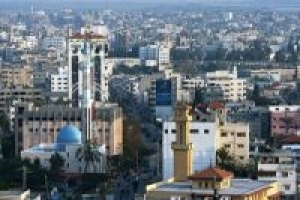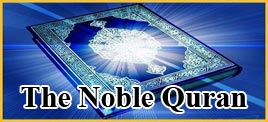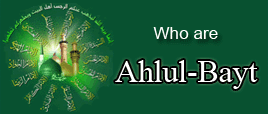For the past decade no place's name has been repeated in the world media as much as Gaza. Gaza is the name usually remembered by words like siege, attack, aggression, homelessness, bombardment, bloodshed and pictures of civilian and innocent victims. We are aware of the innocence and loneliness of the people of this region.
We have been over and over saddened by watching bodies of martyrs on the TV or on the Internet and our hearts have been filled with pain seeing the photos of the wounded in a ruined hospital without medical possibilities. But, where is Gaza? In this 4 part program we are going to get acquainted with the history of Gaza.
For the past 4000 years Gaza has always had a turbulent history. Gaza has been as a link between the eastern and western markets of the world and since the second millennium BC it had been was administered by the Greeks, Babylonians, Assyrians, Iranians and Roman Empire. After that, Muslims ruled over Gaza for two centuries. During two centuries of Crusade, at times the rulers of Egypt and Damascus and at other times the Christian European kings and later on the Ottoman Emirs, the French Napoleon ruled over Gaza.
But the contemporary tragic history of this region starts with the drastic defeat of the Ottomans by Britain in World War One. In 1920, the League of Nations put Palestine under the mandate of Britain. In November 1947, the newly founded UN by issuing a resolution divided Palestine between the Palestinians and the Zionists. One year later, after the end of Britain’s mandate and declaration of entity of Israel, the first war erupted between the Arabs and the Zionists. In this war, Egypt took the control of Gaza. But following the defeat in the 6-day Arab-Israeli war in 1967, the Egyptians ceded Gaza to Israel. The Zionist regime had the control of the region till 1993 that is the conclusion of the compromise between the Arabs and Israel known as Oslo pact. In that year, The Zionist regime started withdrawing from Gaza although it had not evacuated the illegal settlements. Later on in summer 2005, evacuation of Gaza from the Zionist settlers and forces was completed. By ceding Gaza to Palestinians, the Israeli wish for dividing the Palestinian inhabited region in two separate parts namely the West Bank of Jordan River and Gaza Strip was materialized.
What was left for the Palestinians with the withdrawal of Zionists from Gaza was a 363 square kilometers area which has so far been hit by thousands of tons of Israeli bombs and missiles. Gaza is located on the southeastern shore of the Mediterranean and in northeast of Egypt’s Sinai desert. With 40 kilometers length and 8 to 11 kilometers width, it is considered a flat land. The highest spot in Gaza is Abu Awdah, just 105 meters above sea level. This region shares 51 kilometers border with the lands under the occupation of the Zionist regime. Gaza has 11 kilometers common borders with Egypt.
The average annual rainfall in Gaza is 300 millimeters. Therefore, it is susceptible to drought. Shortage of water resources is one of the problems of Gaza people. Oslo Treaty 2 has put the management of underwater resources in this region at the Zionist regime’s disposal. The people of Gaza Strip secure their drinking water from a river named Wadi Gaza which stems from an area in the south of the occupied lands and finally it flows into the Mediterranean. Providing part of its drinking water from this source, the usurper regime of Israel has the control of Wadi Gaza just to exacerbate conditions for the people of Gaza.
Gaza Strip consists of cities, villages and camps. It takes its name from the largest and most populated city of the region that is Gaza city. Gaza city is located in a province with the same name. The city, which till 1993 was under the occupation for 26 years, has an area of 45 square kilometers and over 1.5 million residents. In terms of population density, Gaza city has ranked 6th in the world. The other cities of Gaza province are Jebalia and Nazla. One of its villages is Al-Zahra which is referred to as Gaza University House.
The other province of Gaza is the Northern Province whose cities are Beit Lahya and Beit Hanoun. Beyt Hanoun is called so due to the sand around the city. Beit Lahya is known for its fig trees. It was in this city that Israel attacked a Palestinian school for the first time with phosphorous bomb. 90 percent of the population of Beit Hanoun is refugees 65 percent of whom are under 14 years. Al-Atati is among the villages of this province whose main population are natives. Israel considers Al-Atati as one of the firm fortresses of Hamas.
Dair-al-Balah is the center of a namesake province in Gaza Strip. Dair-al-Balah is known for its red dates and palms 18 percent of which has been destroyed by Israeli bulldozers. Dair-al-Balah people have always paricipated in Intifadas and for this reason it has been attacked by Israel for several times. Other city of the province is Al-Zawyda.
Khan Yunus is the name of a city and a province by the same name in Gaza. Khan Yunus is the second big city of Gaza Strip. The city is considered one of the major bases of Hamas where the Gaza Technological College is located. Other city is Bani Soheia.
Rafah is the name of another city in Gaza Strip. Yasser Arafat airport, the only airport of Gaza Strip, is in this province. The crossing of the city as the only connecting way of Gaza Strip to Sinai has an international fame.
But the cities and villages are not the only places resided by Palestinians. The major part of the population in Gaza Strip consists of Palestinian refugees who live in the special refugee camps. In the next article we will take a trip to Gaza refugee camps.


















